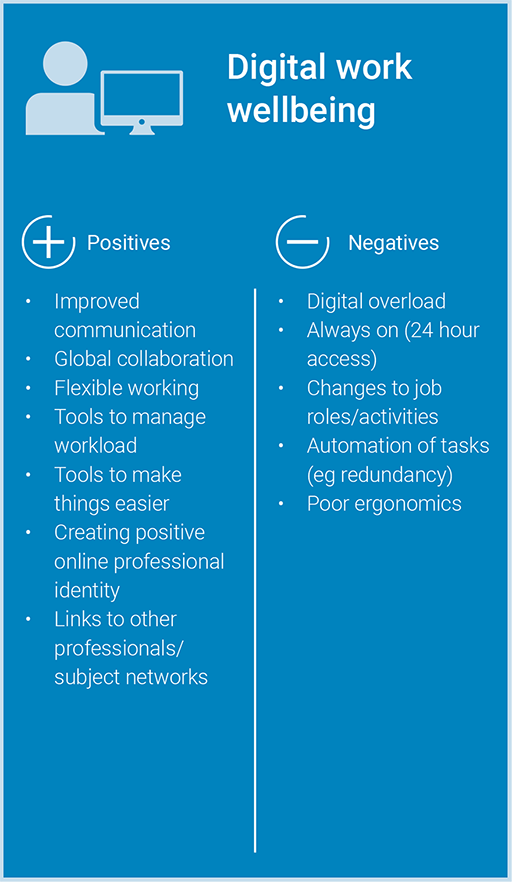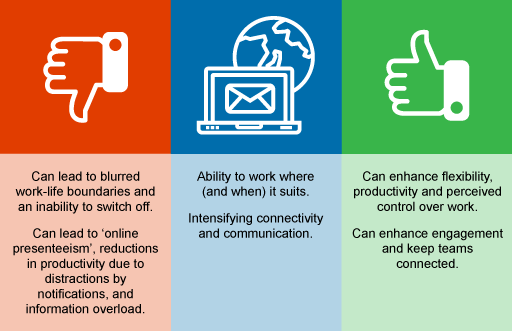4.5 Positives and negatives of digital work wellbeing
Figure 8 is an infographic from Jisc that summarises the positives and negatives of digital work wellbeing from the perspective of their individual digital capabilities framework.
This course hasn’t yet dealt with all the points included in the infographic. Some of them (like communication) are covered in later sections; others will be touched on but labelled differently; and some are beyond the scope of this course. You may wish to use Jisc’s terms to do some independent research on the topics not covered here.
A different way of depicting the potential positive and negative impacts of remote working and technology on work–life balance has emerged from research undertaken by Dr Lara Pecis of Lancaster University’s Management School and Work Foundation, a think tank associated with that HEI (Pecis and Florisson 2021). This is shown in Figure 8.
This diagram more closely reflects this course’s approach to wellbeing. In the next section we look more closely at social wellbeing in a hybrid workplace.


